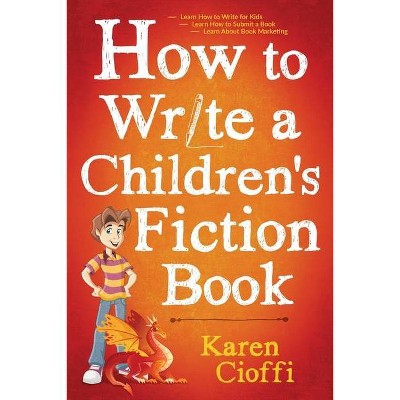How to Write a Children's Picture Book Volume II - by Eve Heidi Bine-Stock (Paperback)

Similar Products
Products of same category from the store
AllProduct info
<p/><br></br><p><b> Book Synopsis </b></p></br></br><p><strong>Recommended by writing instructors and award-winning authors.</strong></p> <p>Whereas Volume I of this series investigates the overall structure of children's picture storybooks at the macro level, this volume, Volume II, investigates the very building blocks of picture storybooks at the micro level: the word, the sentence, the scene and the story.</p> <p>We look at the importance of word choice for giving the story meaning and cohesion.</p> <p>We look at ways to change sentence structure to emphasize the information that is important, and to ensure that sentences flow easily from one to another.</p> <p>We look at the scene: how to begin it, how to end it, and how to create the Beats of action-reaction that make up the scene.</p> <p>And finally we look at the story: what types of problems must a character solve? When does a story introduce a problem? And once a problem is introduced, how do picture storybooks move from problem to solution? What types of solutions do characters find? Is there any part of a story that occurs after the solution is found? To answer these and other questions is to describe storytelling strategies. We look at enduringly popular children's picture storybooks to see what storytelling strategies they employ.</p><p/><br></br><p><b> Review Quotes </b></p></br></br><br><p>"How To Write A Children's Picture Book" is an impressive trilogy of instructional books by children's author and illustrator Eve Heidi Bine-Stock that provides other aspiring children's authors with sound, practical, time-tested advice on constructing a picture book story for children that will hold their interest from beginning to end.</p><p> </p><p>Volume 1 is devoted to the structure of writing and draws examples from a series of popular and successful children's books that include 'The Very Hungry Caterpillar', 'Where the Wild Things Are', 'Sylvester and the Magic Pebble', and several other children's stories. Applicable to both concept books and picture storybooks, "How To Write A Children's Picture Book: Structure" demonstrates and documents that being able to properly structure a story is the key to writing a picture book that will appeal to children preschool through first grade.</p><p> </p><p>Volume 2 focuses upon the use of words, sentences, scenes, and the story when developing a successful picture book for children. Examples and illustrations are drawn from such picture book favorites as 'Harry the Dirty Dog', Harold and the Purple Crayon', 'Frog and Toad Are Friends', and several other well known picture books, in order to help aspiring picture book authors understand the critical role of word choice and storytelling strategies for a picture book's appeal to its intended and age appropriate readership.</p><p> </p><p>Volume 3 explores the importance and usage of figures of speech when writing the text for a child's picture book. Illustrative examples are taken from a series of successful picture books that include 'Lyle, Lyle, Crocodile', 'Where the Wild Things Are', 'Caps for Sale', and 'Fish is Fish'. The deft and careful inclusion of figures of speech are more that just the occasional use of similes, onomatopoeia, alliteration, hyperbole and personification. They are clever, subtle, sophisticated expressions that can make characters and stories truly memorable and raise the level of a good picture book to the status of a great one - a picture book that will endure in popularity through many generations of young readers.</p><p> </p><p>To each volume of this truly outstanding and unique series of 'how to' books specializing in the techniques of crafting picture book stories, Eve Heidi Bine-Stock brings her own particular expertise in communicating her instructions, advice, recommendations, and observations, making "How To Write A Children's Picture Book: Structure" (0971989885, $18.95); "How To Write A Children's Picture Book: Word, Sentence, Scene, Story" (0974893323, $18.95; and "How To Write A Children's Picture Book: Figures of Speech" (097489334X, $14.95) an indispensable, unique, and enthusiastically recommended instructional reference set specifically intended for dedicated authors wanting to hone their craft in the deceptively demanding field of picture books for children. -- James A. Cox, Midwest Book Review</p><br>
Price History
Price Archive shows prices from various stores, lets you see history and find the cheapest. There is no actual sale on the website. For all support, inquiry and suggestion messagescommunication@pricearchive.us




















